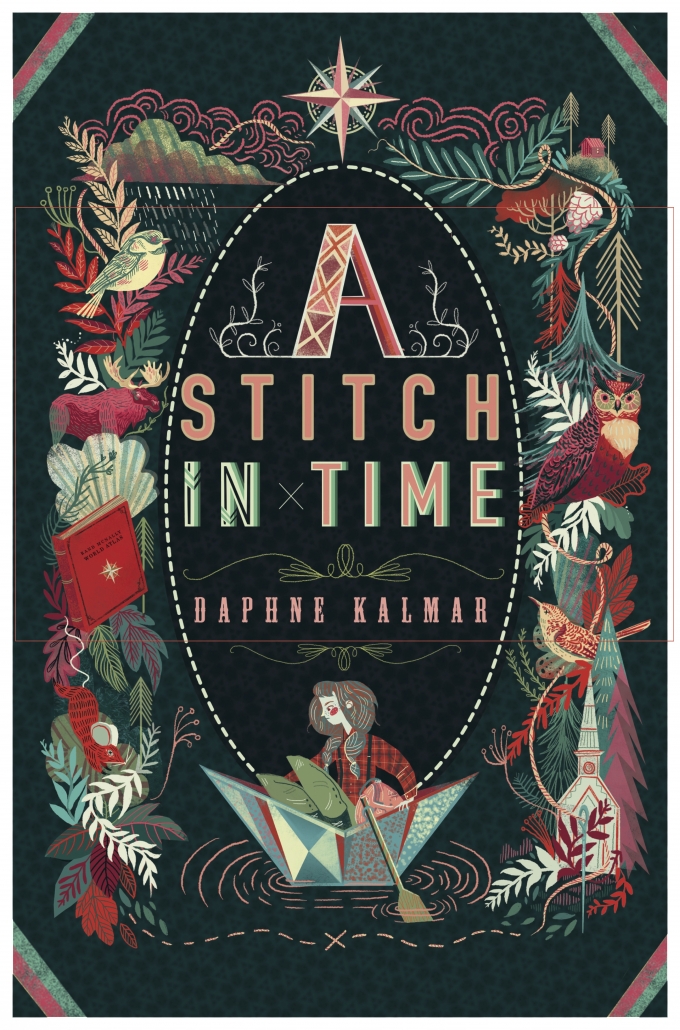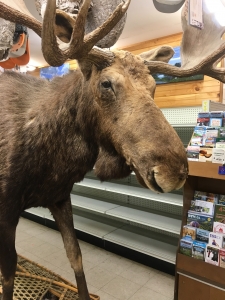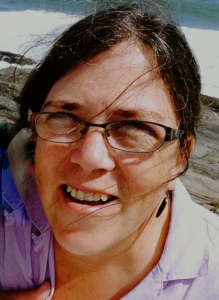Daphne Kalmar ‘10 Releases Debut MG Novel, A STITCH IN TIME
This week we celebrate the release of A Stitch In Time, the debut middle grade novel from Daphne Kalmar ’10
Cobden, Vermont 1927. Donut is an eleven-year-old geography buff who keeps her taxidermied mice hidden in her late mother’s hope chest. Her pops passed away, leaving her an orphan. Aunt Agnes has moved in, bringing along her lumpy oatmeal, her knitting and a plan to drag Donut off to Boston forever.
Donut stands to lose everything: her friends, her village, her home, and the Vermont woods where memories of her pops are stored up.
While Donut dodges the ache of missing her pops, she and her best friend, Tiny, plan how to keep her where she belongs.
A Stitch in Time is shot through with gorgeous, evocative language and shines a light on Donut’s fierce and grieving heart.
A Stitch in Time is now available from Feiwel and Friends, an imprint of Macmillan. Daphne, tell us, who was your favorite character to write and why?
Donut, my eleven-year-old protagonist, was a joy to write. She has a vivid imagination and goes off on riffs of revenge scenarios when she’s angry and drifts off into surreal fantasies while she’s hiding out in a cabin in the Vermont woods. I got carried away at times with these riffs and had to do a bit of cutting so the story didn’t go off the rails.
What kind of research did you do for this novel set in the Northeast Kingdom of Vermont in 1927?
I spent hours at the Vermont State Library reading old newspapers on microfiche. The personal ads were wonderful—who’s visiting from out of state, logging accidents, farming accidents, endless cases of the catarrh—all announced in the newspaper. It allowed me to absorb the flavor of the times and the language as well.
I read old journals at the Vermont Historical Society but Vermonters were not the effusive type back in the day. There wasn’t a word about feelings in those journals—strictly detailed notes quantifying the day: temperature, bushels of potatoes dug, number of fish caught, inches of snow, jars of applesauce canned, Aunt so and so came for supper, etc. Getting a handle on the inner lives of old-time Vermonters wasn’t easy but that very fact was informative.
I found some turn-of-the century manuals for taxidermists with fantastic illustrations. It is a ghoulish profession but the old-time taxidermists who created the dioramas for the Museum of Natural History and other museums were artists. Those dioramas were the way most people back then caught a glimpse of wildlife from all over the world. What is horrifying is the Victorian penchant for collecting. I got a peek at drawer after drawer of study skins—birds and small mammals at the Smithsonian in D.C. The 19th and early 20th century was a difficult time for wild animals with all those academics wandering around with nets and guns.
I do find the idea of taxidermy fascinating…the attempt to resurrect a dead creature, make it as lifelike as possible, glass eyes and all is an interesting commentary on life, death, and grief.
Who were your advisors at VCFA?
The wonderful and brilliant Julie Larios, Sarah Ellis, Leda Schubert, and Rita Williams-Garcia.
How did attending VCFA affect your writing life?
I was a real novice when I started, with no clue about structure or point of view or any of the vocabulary used to discuss a manuscript. The whole experience—workshop, lectures, working with advisors—and the intensity of those two years gave me the tools and confidence to write. Many people have said the VCFA experience cuts ten years off the learning curve of a writer’s life. I believe this wholeheartedly. And I treasure the wonderful VCFA community of writers.
What advice would you give to a prospective VCFA student?
Try everything! I worked on short stories, a novel, picture books, poetry — and I’m so glad I did! It is a time to take risks, not to labor over one manuscript so you can publish right out of the gate. Give yourself the two years at VCFA to hone your craft in that Brigadoon bubble on the hill, safe from the distracting world of publishing.
Thanks for stopping by, Daphne! Readers, visit Daphne online to learn more about A Stitch in Time.
Daphne Kalmar was a teacher for twenty years in California, Massachusetts and Vermont. She owned seventy-five pairs of rubber boots so she could outfit each new class in September and lead weekly expeditions to local creeks and ponds. She graduated from VCFA-WCYA in January, 2010.





